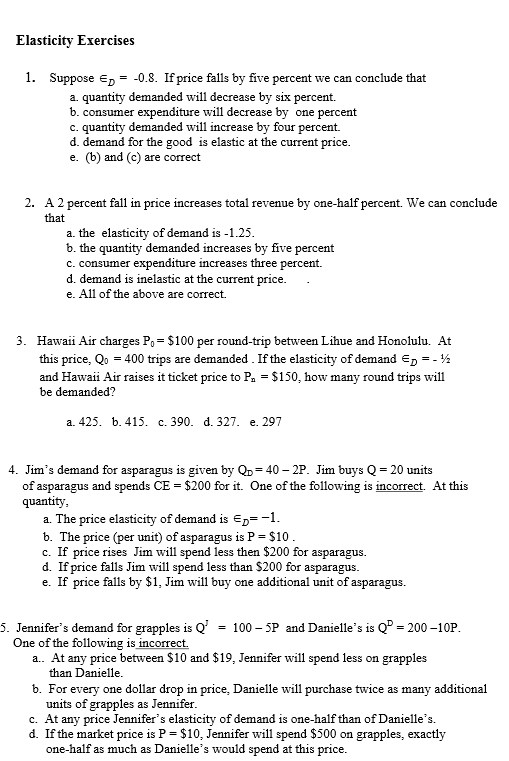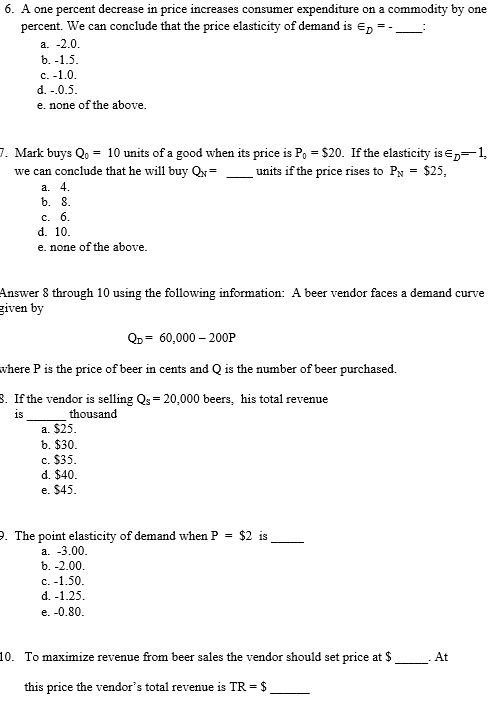A 2 percent fall in price increases total revenue by one-half percent. We can conclude that... 

Elasticity Exercises Suppose d = -0.8. If price falls by five percent we can conclude that quantity demanded will decrease by six percent. consumer expenditure will decrease by one percent quantity demanded will increase by four percent. demand for the good is elastic at the current price. (b) and (c) are correct A 2 percent fall in price increases total revenue by one-half percent. We can conclude that the elasticity of demand is -1.25. the quantity demanded increases by five percent consumer expenditure increases three percent. demand is inelastic at the current price. All of the above are correct. A one percent decrease in price increases consumer expenditure on a commodity by one percent. We can conclude that the price elasticity of demand is D = -: Mark buys Q0 = 10 units of a good when its price is P0 = $20. If the elasticity is - : we can conclude that he will buy = _units if the price rises to PN = $25, 4. 5 6 10 Answer 8 through 10 using the following information: A beer vendor faces a demand curve given by Qd= 60,000-200P Where P is the price of beer in cents and Q is the number of beer purchased. Elasticity Exercises Suppose d = -0.8. If price falls by five percent we can conclude that quantity demanded will decrease by six percent. consumer expenditure will decrease by one percent quantity demanded will increase by four percent. demand for the good is elastic at the current price. (b) and (c) are correct A 2 percent fall in price increases total revenue by one-half percent. We can conclude that the elasticity of demand is -1.25. the quantity demanded increases by five percent consumer expenditure increases three percent. demand is inelastic at the current price. All of the above are correct. A one percent decrease in price increases consumer expenditure on a commodity by one percent. We can conclude that the price elasticity of demand is D = -: Mark buys Q0 = 10 units of a good when its price is P0 = $20. If the elasticity is - : we can conclude that he will buy = _units if the price rises to PN = $25, 4. 5 6 10 Answer 8 through 10 using the following information: A beer vendor faces a demand curve given by Qd= 60,000-200P Where P is the price of beer in cents and Q is the number of beer purchased








